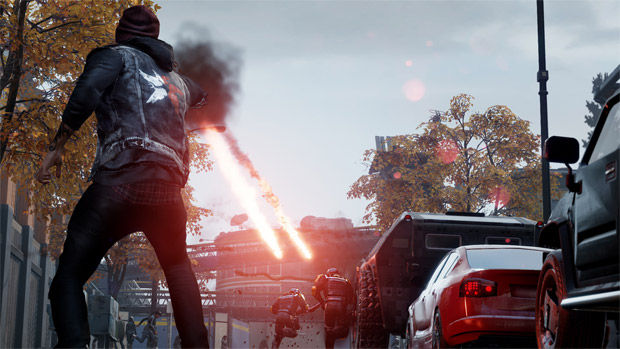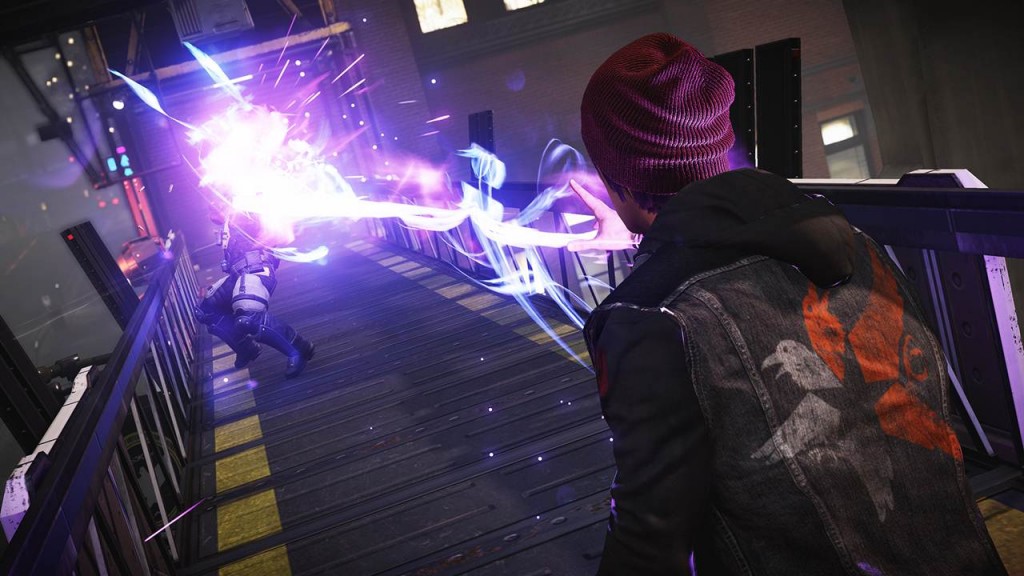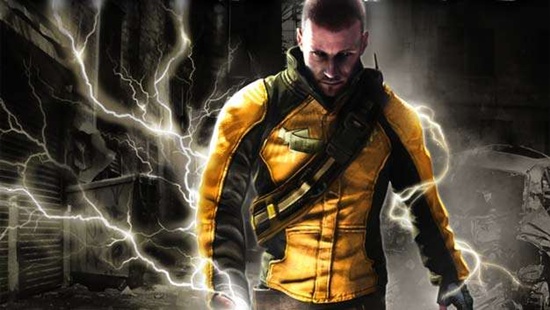
It may seem like a long time ago, but the inFamous series was rather modestly famous. It was a symbol of the popularity of open world action gaming back when that genre type was particularly popular, and the ability to dictate the moral course of the games with player actions both worked together to make players more invovled in their playthrough, but also to give players a variety of options in how they wanted to play. inFamous: Second Son was one of the titles unveiled at E3 2013, the same year that held one of their most important press conferences – the one that officially announced the PS4.
Such was the franchise’s popularity that it led to the appearance of major franchise lead Cole McGrath in Street Fighter X Tekken – one of the most high-profile fighting game crossovers ever when it launched. Speaking of fighting games, as you would expect, Cole McGrath also made an appearance as a playable character in Sony’s own fighting game PlayStation All-Stars Battle Royale. inFamous is a franchise that even has comics to its name, and at one point a movie was planned for inFamous – even if word of that now goes back to about ten years ago. And yet the circumstances of the inFamous series are not as they were back then – the most recent title – inFamous: First Light, was released back in 2014. We are inclined to ask – what the hell happened to the inFamous series?
inFamous games are made by Sucker Punch. Formerly an independent studio, they have worked exclusively Sony since 2000 and were formally acquired by the company in 2011. To their name, Sucker Punch has two major franchises – the first three games in the Sly Cooper series when they originally released on the PS2, and the inFamous series, with their newest title, Ghost of Tsushima, which was announced at 2017’s Paris Games Week.
The inFamous series’s genre type is that of open world action gaming, with the three major titles (inFamous, inFamous, 2, and inFamous: Second Son) incorporating a morality system called Karma that affects the proceedings of the game on both major and minor scales. Karma is a system measured along the continuum of Good and Evil, with Good representing actions that promote the welfare of others, and Evil representing selfish actions. Karma also changes the appearance of protagonists Cole and Delsin, along with their attacks.
We’ll start with the first inFamous game – releasing on the PS3 in 2009. It stars series lead Cole McGrath, who is a courier in the fictional Empire City when we first meet him, as he suddenly finds himself with electricity-based superpowers following his opening of a package. He struggles with his newfound powers, dealing with society around him, and making choices as to what he should do with his powers.
Developed across three years with a team of 60 people, Sucker Punch sought a new direction in their games after the polished slickness and cartoony fun of the Sly Cooper series. inFamous was notably influenced by the concept of superheroes and the origin story, with the developers wanting to create a game that followed the progress of an everyday citizen such as Cole as his powers allow him to grow into something more. The open-world design of the game enhances the feeling of the environment being directly influenced by Cole’s actions, with the Karma system adding definition, structure, consequences and results, to one’s actions. The game released to great critical reception on average – praise particularly singled out for mission progression and the Karma system and the many ways it impacts gameplay and the environment.
The first inFamous game was followed up by inFamous 2 in 2011, also releasing for the PS3. Once again featuring Cole McGrath as protagonist, he sets out to stop another superpowered human known as the Beast in the fictional location of New Marais. The game is notable for featuring a replacement voice actor for Cole – Eric Ladin, who voiced Cole in every subsequent apperance. inFamous 2 is also significant for introducing a major new feature – UGC missions, with UGC standing for User-Generated Content, allowing for people to make their own missions and share them with others. Especially helpful to keep the gaming experience fresh once the game is finished. The developers felt the pressure to include multiplayer and had considered the idea of adding in co-operative play, but it didn’t make sense to them and their goal of keeping the experience fresh.
As for development, it began right after the first game’s development had concluded, and once again featured a modest main development team of 65 to 75 people. When the game released, it earned a strong critical average, with particular attention given to improvements in graphics from the first game.
The ending of inFamous 2, however, sees concludes the story of Cole McGrath with finality, and when inFamous Second Son, the next proper inFamous game, would release in 2014, it would feature a new protagonist in Delsin Rowe. The game itself takes place seven years after the ending of inFamous 2, which saw the elimination of many superpowered humans, and the establishment of a US government police force meant to wipe out the superhumans, designating them as terrorists. The location this time is a real-world one – Seattle, unlike the previous fictional locations, however inspired by the real world they may be.
As a major title, Second Son would bring back the Karma system. It was in the planning stages as far back as 2010 – before the first inFamous game would have much time to breathe after release, Sucker Punch was already planning for an inFamous on the PS4. They routinely were in contact with Sony system architect Mark Cerny, one of several development teams that kept contact with Sony during the design and creation of the PS4.
While the dev team count reached to more than one hundred staff this time, it’s still small enough to allow for a sense of streamlining and direction. Second Son achieved million-seller status within nine days of launch – the best commercial record of any inFamous title, and noteworthy even on its own. While its critical average was lower than past games, it still maintains a solidly good standing.
Shortly after the development of Second Son, Sucker Punch would begin work on inFamous: First Light, a prequel to Second Son, and releasing in 2014 a few months after Second Son. It stars one of the major characters of Second Son – “Fetch”, a human with superpowers who has been captured by the US government force that is hunting people like her. A great deal of the game is Fetch recounting her story to the lead antagonist of Second Son, leading up to the introduction scene of Second Son. The game released to modestly positive reception on average – for the most part, the character of Fetch is well-liked, but the title is also seen as a “more of the same” inFamous title, with issue being taken also with the game’s perceived lack of difficulty.
This is how far the franchise has gone and how far it seems it will go. There’s no hint of another inFamous title being planned, and with Sucker Punch hard at work on Ghost of Tsushima for the PS4, with word of this title being development (though publicly unnamed at the time) first breaking in December 2015. Sucker Punch has a history of working on games with comparatively small development teams with the ambition of delivering action experiences of a great scale, and with Ghost of Tsushima’s release date still unknown, it’s hard to think Sucker Punch is planning to juggle two major projects at once.
To celebrate the ten-year anniversary of the first inFamous game’s launch, Sucker Punch tweeted out an informative thread providing ample background on the first game, through video clips and text. That being said, it’s entirely possible that another new inFamous game could happen once Ghost of Tsushima is completed, though Sucker Punch may be watching to see how Ghost of Tsushima is received both critically and commercially, seeing as it’s their most recent title in a few years.
One might be inclined to think that with Sucker Punch’s relative dormance, Sony may be watching the studio as well. Do you think that all necessary stories in inFamous have been told, or do you want to see more? Do you have a favorite character in the franchise? Do you see inFamous as a franchise that, with a properly maintained story, could continue nearly indefinitely? Let us know your thoughts in the comments section below.

















